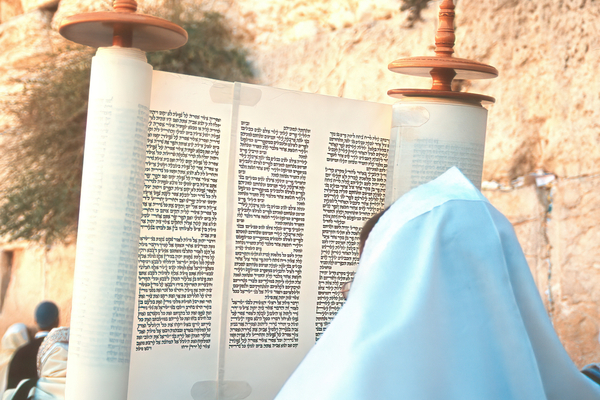The Torah’s Biblical travels are the basis for the laws and customs of its reading in synagogues today.
By Rabbi Ari Enkin, Rabbinic Director, United with Israel
This week’s Torah portion in Israel is “Behalotecha” (Numbers 8:1-12:16) and it is filled with interesting episodes and passages. One of the things in the reading are the instructions on how the Torah was to be transported during the Jewish people’s 40 years of travels in the desert.
These very same verses are recited nowadays in the synagogue every time the Torah is removed from the ark for public readings. As such, let’s take this opportunity to learn about the synagogue Torah reading.
Moses instituted that the Torah be read three days a week. This is based on Exodus 15 where we read that the Jews traveled for three days and found themselves thirsting for water. Water is a metaphor for Torah. As such, the passage can be read as the Jewish people thirsting for Torah after having gone three days without any study. As a result, Moses instructed that three days should not pass without any Torah study.
The public Torah reading was formally instituted by Ezra the Scribe after the Jews’ return to the Land of Israel following the Babylonian exile, as described in the Book of Nehemiah.
The Talmud then took the institution of Ezra and created the order, procedures, and service that we have to this very day.
The Torah is generally read on weekdays on Monday and Thursday morning. It is also read on Shabbat and Holiday mornings and also on Shabbat afternoon.
It is never read at night, with the exception in some synagogues of reading the Torah on the night of Simchat Torah…the holiday that celebrates the completion of the annual cycle of the Torah readings.
Indeed, there is essentially a Torah portion assigned to every week of the year. On Monday and Thursday morning a short excerpt of the weekly Torah portion is read while on Shabbat the entire portion is read and completed. The Shabbat afternoon reading is a short excerpt from the upcoming week’s Torah potion.
The Torah (or Torahs) being read from are removed from, and returned to, the ark where they are stored (more about that in a minute!) at every Torah reading in a distinct and sometimes lengthy ceremony. The Torah reading service is also known as the “laining,” meaning “reading” in Yiddish, in many Ashkenazi congregations. The one who reads the Torah is known as the “baal koray”
The Torah wasn’t always completed in an annual cycle. The annual cycle was the custom in Babylonia. In the Land of Israel and neighboring countries, a triennial cycle was in place in which the Torah reading would be completed in three years. Each Shabbat only a third of the weekly Tora portion was read. The next year, the second third was read, and in the third year, the last third of the portion was read. The current practice follows the annual/Babylonian cycle.
On Monday and Thursday three people are honored with being called to the Torah. These people recite the blessings before and after the reading of an excerpt. The honor of being called to the Torah is known as an “aliyah.”
On Shabbat, seven aliyot are given out, but it is permitted and not uncommon to call more people to the Torah in order to allow many people to be honored. On Yom Kippur, six people are called to the Torah and on most other holidays, just five. The one who calls the honorees up for their aliya is known as the “gabbai” (synagogue officer). Those who are called to the Torah are are often celebrating lifecycle events, or may have recovered from an illness or returned from a long trip.
As mentioned, the Torah scrolls are stored in an ornamental cabinet, called “the ark” of “holy ark” designed specifically for Torah scrolls. In addition to serving the purpose of housing the Torah scrolls, the holy Ark, being placed at the front of the sanctuary, quickly alerts worshippers to the direction of Jerusalem and which direction to face in prayer.
It is considered an honor to be appointed for removal and return of the Torahs to/from the Ark. The Torah is read from a special platform, usually in the center of the congregation, known as a “shulchan” (table) or “bima” (platform).
After the Torah is read it is lifted for all to see. This ceremony is called hagba. Many people have the custom to point to the lifted scroll with their pinky finger, a custom whose source is unclear. The congregation then recites the verse (Deut. 4:44), “And this is the Law which Moses set before the people of Israel”, adding, “on the word of the God, by hand of Moses.”
In Sephardic congregations hagba is done before the Torah is read. It is considered to be a great honor, some say the greatest honor, to perform the hagba. Another honoree is then awarded with “gelila,” dressing the Torah in preparation for its return to the Ark.
And that’s what the Torah reading service is all about!
